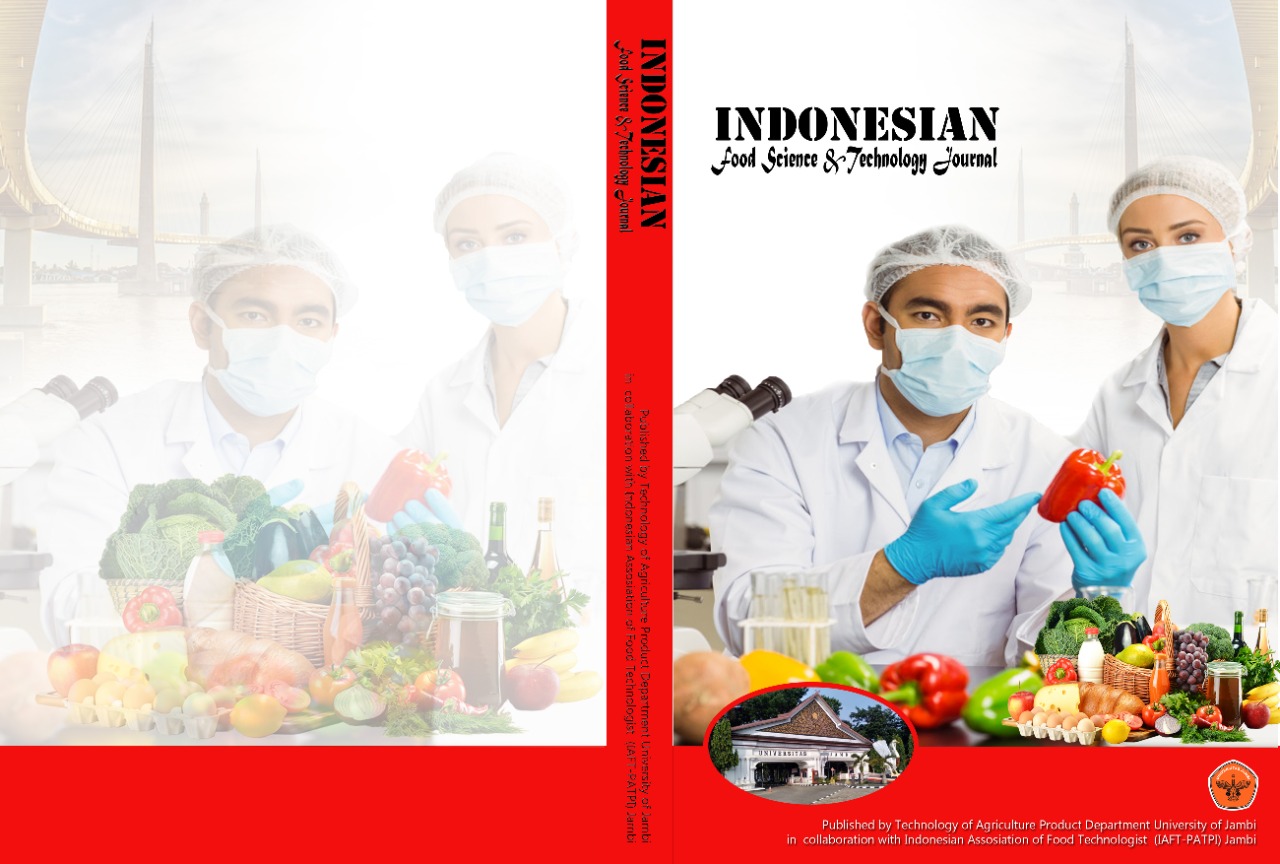Quality and Oxidative Stability of Tallow Extracted by Dry- and Wet-Rendering
DOI:
https://doi.org/10.22437/ifstj.v8i1.32528Abstract
The oxidative stability of oil or fats is an essential parameter to determine the quality of products. Commonly, tallow is extracted by dry- and wet-rendering, both methods depend upon the water requirement. The study aims to examine the quality and oxidative stability of tallow from both methods, along with different temperatures (25°C and 4°C) and storage times. Tallow was analyzed for quality changes such as acid value (AV), peroxide value (PV), thiobarbituric acid (TBA), fatty acid profile, and differential scanning calorimetry (DSC) to indicate oxidative stability. According to research, acid value (AV) and thiobarbituric acid (TBA) were considered acceptable during storage for 180 days, as per the Codex Standard and FAO/WHO for Named Animal Fats CODEX STAN 211–1999 for edible fats and oils. However, peroxide oxide value (PV) did not meet the acceptable limit for dry- and wet-rendering and storage time of 180 days at 25°C, with values of 17.3 and 16.9 meq O2/kg, respectively. This indicates that fat oxidation increases during storage (p<0.05), while temperature and rendering methods do not significantly impact fat hydrolysis inhibition for 180 days (p>0.05). Even at 4°C, both temperatures failed to preserve tallow quality, as confirmed by fatty acid profiles and differential scanning calorimetry. The result indicates that neither method nor temperature can prevent the inhibition of fat hydrolysis from natural oxidation for a longer storage time of 180 days.
Downloads
Downloads
Published
How to Cite
Issue
Section
License
Copyright (c) 2024 Indonesian Food Science and Technology Journal

This work is licensed under a Creative Commons Attribution 4.0 International License.








